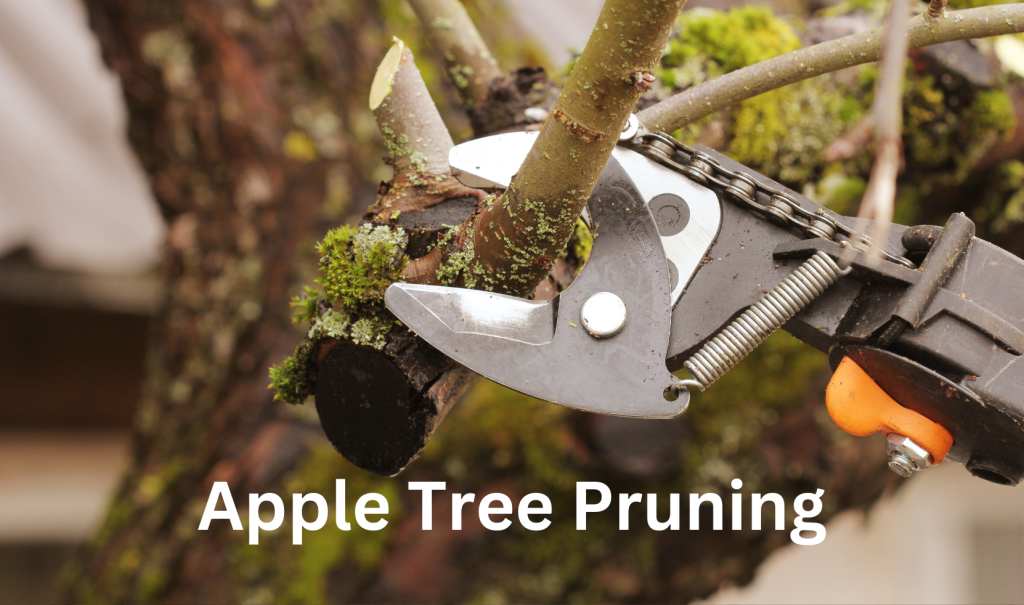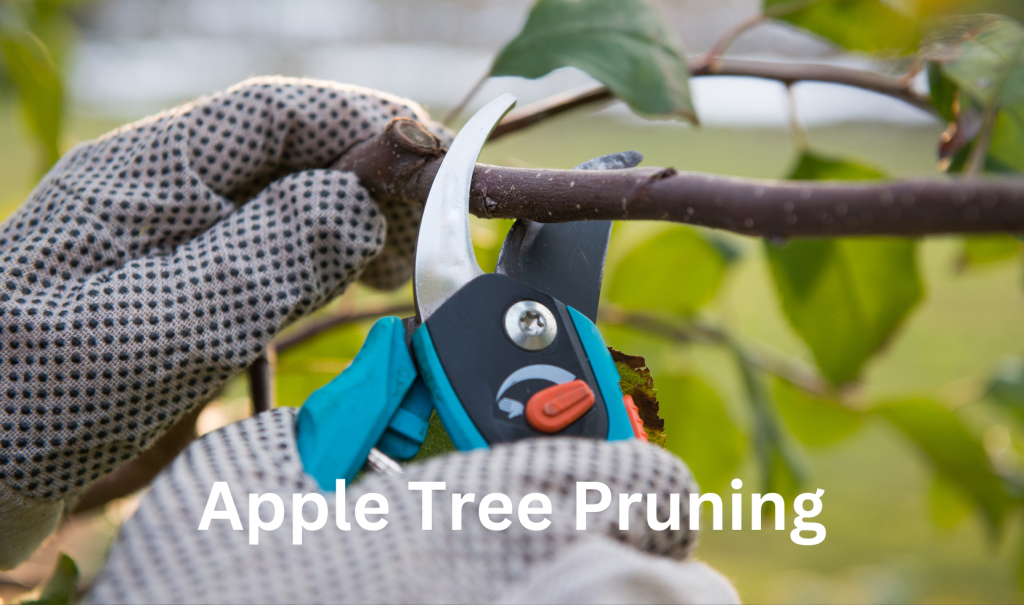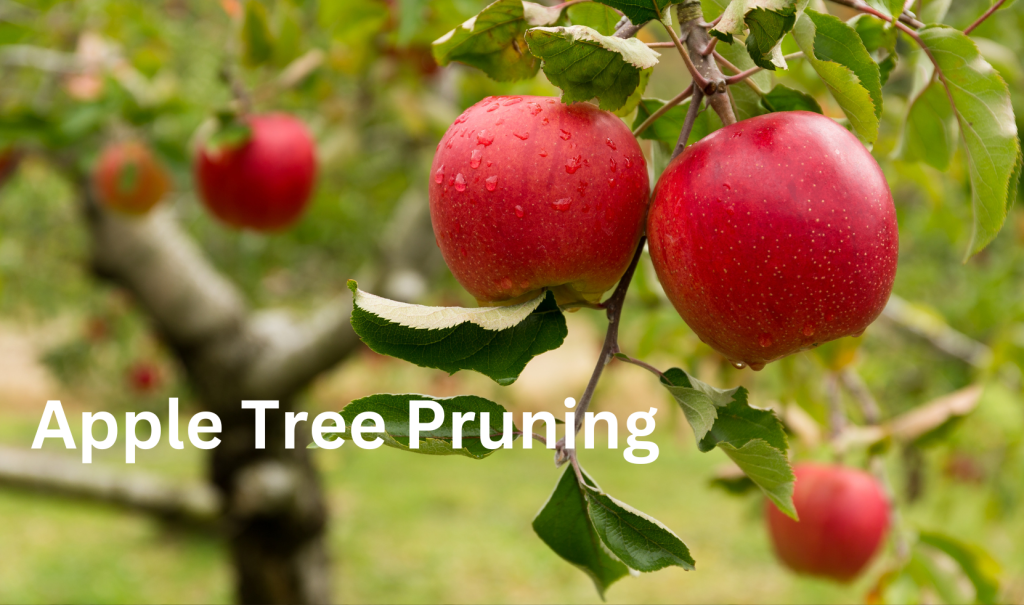Pruning an apple tree is a crucial task that ensures your trees remain healthy, productive, and aesthetically pleasing. This comprehensive guide is designed to provide you with everything you need to know about pruning apple trees, from understanding the different types of pruning to the step-by-step process of pruning both young and mature trees. By the end of this article, you’ll have the confidence to tackle this essential gardening task with ease.
Why Pruning is Essential for Apple Trees
Pruning isn’t just about maintaining the shape of your apple trees; it’s about promoting better fruit quality, improving tree health, and ensuring longevity. Proper pruning can help your tree:
- Fight off infections by allowing better air circulation.
- Increase sunlight penetration, leading to better fruit ripening.
- Develop a strong structure that can support heavy fruit loads.
- Stimulate new growth and enhance fruit production.
When to Prune Apple Trees
The best time to prune apple trees is during their dormant season, typically between November and early March. Pruning during this period minimizes stress on the tree and reduces the risk of disease transmission. For mature trees, winter pruning is essential for controlling shape and vigor, while summer pruning helps encourage fruiting and flowering.

Tools You’ll Need
Before you start pruning, gather the following tools:
- Secateurs: For small branches.
- Loppers: For medium-sized branches.
- Pruning saw: For larger branches.
- Sturdy ladder: Preferably a tripod ladder for stability.
- Eye protection and gloves: To avoid injury from branches and sawdust.
Pruning Basics for Apple Trees
In natural growth, a tree will have a central leader (the tallest branch) and lateral branches that form the rest of the tree. In an open-centered tree, the central leader is removed, and four to five scaffold branches (main limbs) are developed through formative pruning.
Steps to Winter Prune Apple Trees
- Remove Dead, Diseased, and Damaged Wood: Start by cutting out any dead, diseased, or damaged branches.
- Eliminate Crossing Branches: Remove any branches that are rubbing against each other. Keep the better-placed, outward-facing branch.
- Prune Out Strong Center Shoots: Remove strong shoots growing towards the center to maintain an open structure.
- Shorten Main Branches: Cut back the previous year’s growth on each main branch by one-quarter to one-third to encourage branching.
- Leave Young Side-Shoots Unpruned: Allow them to develop fruit buds for the next year.
How Much to Remove
This depends on the tree’s vigor. Generally, remove about 10-20% of the canopy during routine winter pruning. Over-pruning can lead to a mass of vigorous upright growth known as watershoots.
Pruning Young Apple Trees (Formative Pruning)
First Year
Immediately after planting a maiden (one-year-old) tree, cut back by one-third to promote branching.
Second Year
Select 4-5 well-spaced laterals with wide crotch angles as scaffold branches. Prune back primary shoots by one-third above an outward-facing bud.
Third Year
Prune back new side shoots by one-third above an outward-facing bud.
Fourth Year Onwards
Focus on keeping the center clear of growth, removing competing or rubbing branches, and eliminating any weak or diseased wood.
Special Considerations for Different Types of Apple Trees
Spur-Bearing Trees
These trees produce fruit on short shoots called spurs. On older trees, thin out overcrowded spurs to ensure they are spaced 10-15cm apart along the branches.
Tip-Bearing Trees
Varieties like ‘Blenheim Orange’ and ‘Bramley’s Seedling’ produce fruit at the tips of long shoots. Reduce older long fruited branches by up to a quarter to a strong younger side-shoot closer to the main trunk.
Pruning Overly Vigorous Trees
If your tree sends out excessive growth each year despite light pruning:
- Summer Prune: Between mid-August to mid-September, reduce side-shoots longer than 30cm to 15cm.
- Winter Thin Out: Thin out side-shoots in winter if growth becomes crowded.
Renovation Pruning for Neglected Apple Trees
Old, neglected trees often develop congested branches that need thinning out:
- Spread renovation over two or three winters.
- Remove dead or diseased wood first.
- Gradually thin out congested growth without removing too much in one go.
Safety Tips for Pruning
Always ensure your ladder is stable and positioned securely. Wear eye protection and gloves to avoid injury from twigs or sawdust. Use sharp tools to make clean cuts that heal quickly.

Common Problems When Pruning
Apple Canker
Look for signs of apple canker on stems and remove affected growth where possible.
Lichens
Lichens do no harm but can indicate poor vigor if present on shoot tips.
Frost Damage
Be aware of late frost damage in spring affecting flowers and developing fruit.
Biennial Bearing
Some apple trees may produce a bumper crop one year followed by a poor crop the next. Regular pruning can help balance this uneven production cycle.
Additional Tips for Maximizing Fruit Quality
- Thinning Fruit: Thin out developing fruit within 20-40 days of full bloom so each remaining apple is spaced 6-8 inches apart on the branch.
- Use Heading Cuts: For young trees, heading cuts help keep branches compact and sturdy enough for heavy fruit loads.
- Prune Off Season if Needed: For broken or wind-damaged branches, prune as soon as possible regardless of season.
By following these detailed guidelines on how to prune apple trees effectively, you’ll ensure your trees remain healthy, productive, and beautiful year after year. Whether you’re new to gardening or an experienced horticulturist, these tips will help you get the most out of your apple orchard.
For more information on this topic or other gardening advice, visit our website or subscribe to our newsletter for regular updates!

